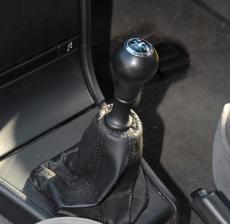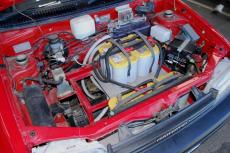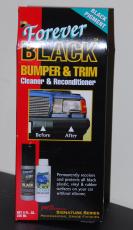I’ve written here previously about three wheel cars but recently I came across a very interesting article on the topic.
It was first published in US magazine Road and Track in May 1982 and is based around a report prepared for the National Highway Safety Administration by race car engineer Paul Van Valkenburgh. Van Valkenburgh, working for Systems Technology, Inc, was tasked with seeing whether or not 3-wheel cars had intrinsic dynamic deficiencies over 4-wheel cars. As in, do 3-wheleers really have a propensity for overturning, have uniquely (bad!) handling, and so on.
Excerpts from the magazine article:
He tested eight 3-wheelers, four with a single front wheel and four with a single rear wheel, and he compared them to four roughly equivalent 4-wheelers.
The first concern of those who insure, if not those who drive, 3-wheelers is the possibility of turning over. A theoretical dissection of the problem turns out to be less important than simple observation that one test 3-wheeler had better overturn resistance than the best 4-wheeler, a Fiat X1/9. Sound ridiculous? It isn’t if you look at the numbers. If you get the center of gravity (cg) low enough and close enough to the 2-wheel end, and have a wide enough track, you can build a 3-wheeler that won’t overturn in the most extreme maneuvers on flat pavement. Naturally, if you retain the identical cg location and track width of a given 4-wheeler, three wheels will provide a lower overturn safety margin. But these design parameters are never cast in stone and, in limited production, you can put the cg and track just about anywhere you choose.
To be honest, the 3-wheeler with the best overturn resistance was sans body, and therefore had an unrealistically low cg. But another 3-wheeler, fully equipped, was still almost as overturn resistant as the Fiat. Also, I should note that one of the 3-wheelers could have been overturned in testing and in fact was by its owner. It had a high, rearward cg and narrow track, and at 0.6g it would take up on two wheels, precisely as predicted from static tests. To a skilled driver, this was no problem, and it could be balanced there like a motorcycle as long as you had enough time, space and presence of mind.
But now I come to a philosophical question: Is a vehicle that will overturn during hard cornering “unsafe”? Perhaps it is even more of a legal question, as there are some current lawsuits trying to determine if Jeeps and other recreational vehicles are “unsafe” in overturn. If overturn in cornering is unacceptably dangerous, what about tall, narrow, commercial vehicles, such as loaded tractor-trailers, which can go into oversteer at about 0.3g and overturn at about 0.6g?
Even if I assume that engineers of 3-wheel automobiles would optimize the overturn design limits, I still need to know how their stability and handling compare. I will ignore the myriad ways of analyzing stability (static, dynamic, transient, steady-state, oscillatory, divergent, covergent) and just consider oversteer/understeer. Most car enthusiasts have an intuitive feel for these terms and respect for the potential dangers of unexpected oversteer at the limit.
As it turns out, there was a strong distinction between 4-wheel cars and single-front-wheel cars — but not single-rear-wheel cars. Although the sample was admittedly small, the inescapable conclusion is that all single-front wheel 3-wheelers will oversteer at their limit of adhesion. Conversely, all single-rear-wheel cars had strong understeer at the limit. And in neither case could the opposite effect be created, in spite of all the chassis tuning.
Conventional 4-wheelers have a constantly increasing steer angle as speed or g-forces increase. The same is true (to a potentially greater degree) with single-rear 3-wheelers. But the steering on single-front 3-wheelers levels off and then decreases with increasing g’s, requiring counter-steering to avoid a spin.
If these results were difficult to predict, they are easy to explain after the fact. Oversteer/understeer is a result of many vehicle dynamics factors, such as tire size, type and pressure, suspension characteristics, steering compliance, weight distribution and roll resistance distribution. With all other factors being roughly equal, the end of the car with the greatest weight and greatest roll resistance (springs or anti-roll bar) will have the lower limit of adhesion. Put another way, a nose-heavy car or one with lots of its roll resistance up front will understeer, and vice versa for rear/oversteer. The implications are obvious. With a single front wheel, most of the weight is at the rear, not to mention all of the roll resistance.
On some of these 3-wheelers, extremes of state-of-the-art chassis tuning tricks were attempted, with negligible effect. Regardless of large tire and pressure differences, camber changes and changes in weight distribution that were reasonable from an overturn standpoint, they still oversteered. But again, is oversteer unacceptable? There are a lot of naive folks driving around out there in oversteering production sedans (because of low tire pressures) who will never encounter that limit even in an emergency. The fact of oversteer is easy to obtain; the implications are more than a little speculative.
So overturn can be avoided, and single-rear 3-wheelers have a comfortable degree of understeer. But what about handling — how do they feel? Professional researchers resist being quoted on subjective impressions, but at least here they report a numerical value for handling response. These yaw response times represent the time required for a car to reach a steady cornering condition after a quick steering wheel input. Ordinary 4-wheelers range form perhaps 0.30 seconds for a large car with soft tires, to 0.15 sec for sports cars. All of the 3-wheelers were below 0.20 sec, to as low as 0.10 sec. and that is quick.
The answer is not in the number of wheels, or their location, but in mass, tires and polar movement. The effect of polar movement has been considered for years, but this is the first report I have seen with actual figures. The 3-wheelers had, on the average, about 30 percent less polar movement (normalized for weight) than 4-wheelers, because of centralized masses and less overhang. And the ones with the lowest figures and best tires had the quickest response. Van Valkenburgh says that some of the 3-wheelers had yaw characteristics akin to those of formula cars.
All of the rest of the tests showed no measurable difference between 3- and 4-wheelers. The testers subjected the cars to crosswinds, bumps in turns, braking in turns, free steering return, lane changes and off-camber turns, and although there were many vehicle-specific problems (as you would expect with one-off prototypes) the number of wheels was unimportant.
The technical problems involved in producing a practical 3-wheel car do not appear to be overwhelming. And the potential benefits of cost and fuel conservation would seem to make it worthwhile. As Van Valkenburgh succinctly put it, “a properly engineered 3-wheel car can be made as stable as a properly-engineered 4-wheel car.” But recall your initial reaction to the questions of stability and handling. The big problem is psychological — market acceptance of a radical change. Even if the 3-wheel layout were twice as good, I wouldn’t speculate about its future. One of the most powerful forces on earth is the inertia of an existing idea. But if 3-wheelers ever have a chance to make it, their time is now.
 Right now – and probably for the next few years – there’s a helluva bargain to be had.
Right now – and probably for the next few years – there’s a helluva bargain to be had.
 Julian Edgar, 50, has been writing about car modification and automotive technology for nearly 25 years. He has owned cars with two, three, four, five, six and eight cylinders; single turbo, twin turbo, supercharged, diesel and hybrid electric drivelines. He lists his transport interests as turbocharging, aerodynamics, suspension design and human-powered vehicles.
Julian Edgar, 50, has been writing about car modification and automotive technology for nearly 25 years. He has owned cars with two, three, four, five, six and eight cylinders; single turbo, twin turbo, supercharged, diesel and hybrid electric drivelines. He lists his transport interests as turbocharging, aerodynamics, suspension design and human-powered vehicles.

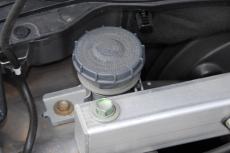
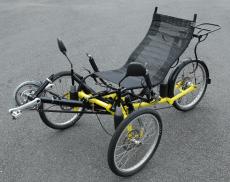
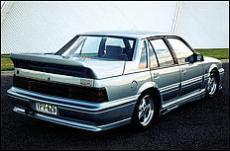
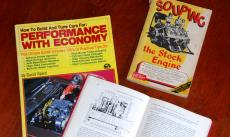 As I have often written here, I love buying (and reading too, of course!) car books. I have a very extensive library of automotive books, including many technical examples dating back up to ninety years.
As I have often written here, I love buying (and reading too, of course!) car books. I have a very extensive library of automotive books, including many technical examples dating back up to ninety years. 